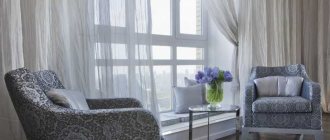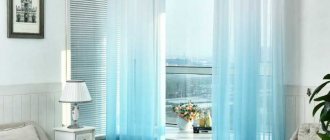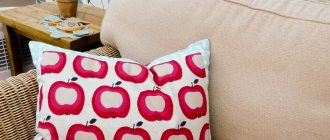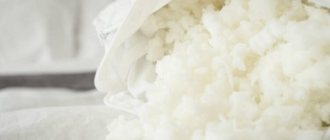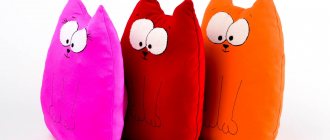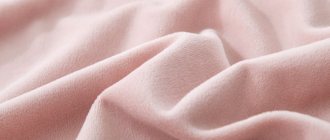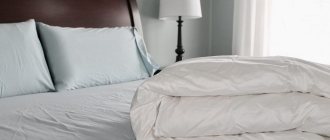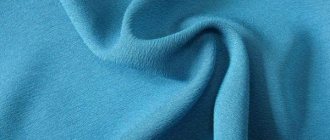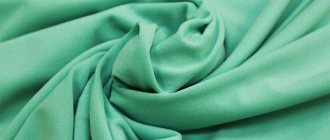What is holofiber
Hollofiber, like other nonwoven materials, began to be produced in the 30s of the last century in Europe.
In Russia, interest in this filler appeared in the 60s, and over time the material gained popularity in the domestic market. Hollow fiber is made from polyester using a thermal method of gluing fibers. This is a safe method of designing material elements, because no harmful chemicals are involved in the production process. Also, factories producing holofiber use an aerodynamic method for forming fibers. To do this, the raw materials are placed in special equipment (diffuser), where the holofiber elements are subjected to air treatment. As a result, the fibers of the material are located in several directions: vertical, diagonal, chaotic. Thanks to this, holofiber acquires properties such as high thermal insulation, elasticity, and breathability.
This material is sold in three forms:
- Canvas. Used as insulation for blankets and outerwear.
- Plate. For use in the construction industry for insulation of walls, floors, ceilings, roofs.
- Twisted "balls". Most often used to fill pillows.
It is obvious that holofiber has established itself as a reliable, practical, easy-to-use material.
This is what holofiber filler looks like
Holofiber pillow fillings: harm and benefit
Hollofiber, like other nonwoven materials, began to be produced in the 30s of the last century in Europe. In Russia, interest in this filler appeared in the 60s, and over time the material gained popularity in the domestic market.
Hollow fiber is made from polyester using a thermal method of gluing fibers. This is a safe method of designing material elements, because no harmful chemicals are involved in the production process. Also, factories producing holofiber use an aerodynamic method for forming fibers. To do this, the raw materials are placed in special equipment (diffuser), where the holofiber elements are subjected to air treatment. As a result, the fibers of the material are located in several directions: vertical, diagonal, chaotic. Thanks to this, holofiber acquires properties such as high thermal insulation, elasticity, and breathability.
This material is sold in three forms:
- Canvas. Used as insulation for blankets and outerwear.
- Plate. For use in the construction industry for insulation of walls, floors, ceilings, roofs.
- Twisted "balls". Most often used to fill pillows.
It is obvious that holofiber has established itself as a reliable, practical, easy-to-use material.
This is what holofiber filler looks like
Due to the fact that the holofiber elements are shaped like small springs, bedding with this filling is soft and elastic. In comparison with padding polyester, which has similar characteristics, holofiber has advantages: it holds its shape better, allows air in, and does not contain chemicals. That is why this type of filler is preferred by millions of consumers.
Holofiber has a number of positive qualities, but there are also certain disadvantages. Let's look at the characteristics of the filler in more detail.
- breathability;
- hypoallergenic;
- durability;
- wear resistance;
- light weight;
- environmental friendliness;
- ease of care.
In addition, holofiber does not become electrified, does not attract dust, and does not become a haven for parasites. Also, the material does not absorb odors.
They are very relative:
- does not absorb moisture. This is a minus for those who often sweat in their sleep, but a plus when the product needs to be dried after washing;
- price. Holofiber is more expensive than synthetic winterizer, but cheaper than natural fillers.
So, bedding with this filler has much more positive qualities than negative ones. Holofiber really deserves the attention of those who are prone to allergies, care about their health, or simply strive to purchase practical, functional things.
Holofiber is a common filling for pregnant pillows. The elasticity, hygiene, and environmental friendliness of a product with such a filler are very important for expectant mothers. A pregnancy pillow should keep its shape, so you should give preference to medium-hard or hard models.
Maternity pillows are very comfortable not only when expecting a baby, but also when breastfeeding. Holofiber filler is acceptable for both mother and child due to its safety and functionality.
It makes sense to purchase a pillow for a child at the age of approximately 1-1.5 years, when the spine begins to take its natural curves. A product for children should be rectangular, medium hard, and low. The height of the pillow for a 1-2 year old child should not be more than 4 cm, and at 3 years old it is worth increasing the height to 6 cm. With age, the product will need to be changed or the pillowcase should be ripped apart, adding more “innards”.
Hollow fiber is a good filling option for a baby pillow, because it is safe, does not cause allergies, and “breathes.” However, this material may cause sweating. Selecting a pillow for a specific child should be done by trial and error, taking into account the individual characteristics of the baby.
The weight of the product directly depends on its size. The weight of a holofiber pillow can be as follows:
- 40x60 cm (children’s) – about 400 g;
- 50x70 cm (rectangular) – 600 g;
- 60x60 cm (square) – 600-700 g;
- 70x70 cm (square) – 1000 g.
Advantages and disadvantages
Holofiber has a number of positive qualities, but there are also certain disadvantages. Let's look at the characteristics of the filler in more detail.
pros
- breathability;
- hypoallergenic;
- durability;
- wear resistance;
- light weight;
- environmental friendliness;
- ease of care.
In addition, holofiber does not become electrified, does not attract dust, and does not become a haven for parasites. Also, the material does not absorb odors.
Cons of holofiber
They are very relative:
- does not absorb moisture. This is a minus for those who often sweat in their sleep, but a plus when the product needs to be dried after washing;
- price. Holofiber is more expensive than synthetic winterizer, but cheaper than natural fillers.
So, bedding with this filler has much more positive qualities than negative ones. Holofiber really deserves the attention of those who are prone to allergies, care about their health, or simply strive to purchase practical, functional things.
Minuses
Why you should refuse a pillow with holofiber:
- This is an artificial material. Such a purchase is not suitable for people who use everything exclusively of natural origin.
- The pillows are elastic. Those who prefer to sleep on a soft surface, for example, on a surface stuffed with feathers, will find the product uncomfortable.
- The filler accumulates static electricity.
- Buyers experience pain in the neck when using the item. This is due to the lack of sufficient head support. No orthopedic effect.
Pillows with holofiber for pregnant women
Holofiber is a common filling for pregnant pillows. The elasticity, hygiene, and environmental friendliness of a product with such a filler are very important for expectant mothers. A pregnancy pillow should keep its shape, so you should give preference to medium-hard or hard models.
Maternity pillows are very comfortable not only when expecting a baby, but also when breastfeeding. Holofiber filler is acceptable for both mother and child due to its safety and functionality.{banner_serefs}
What's better
Due to the large presence of similar characteristics, it is difficult to give uniform advice. Bamboo is suitable for lovers of natural materials, holofiber is for those who value durability. Both copies do not contain harmful components that could have a negative effect on the human body.
Holofiber is more practical and cheaper because it has a long service life and does not break down.
There is also an option such as buying a pillow in which the filling is both bamboo and holofiber in proportions of 50 to 50.
Children's pillows made of holofiber
It makes sense to purchase a pillow for a child at the age of approximately 1-1.5 years, when the spine begins to take its natural curves. A product for children should be rectangular, medium hard, and low. The height of the pillow for a 1-2 year old child should not be more than 4 cm, and at 3 years old it is worth increasing the height to 6 cm. With age, the product will need to be changed or the pillowcase should be ripped apart, adding more “innards”.
Hollow fiber is a good filling option for a baby pillow, because it is safe, does not cause allergies, and “breathes.” However, this material may cause sweating. Selecting a pillow for a specific child should be done by trial and error, taking into account the individual characteristics of the baby.
How to make your own holofiber pillow
Pillows made from synthetic fill can come in different sizes. Some are used for sleeping and resting, others are used to support the neck on the road, and others are used to support the abdomen for pregnant women.
To sew a pillow measuring 50x70 cm you will need the following:
- cotton or calico, size 100×150 cm;
- 0.5-1 kg of holofiber, depending on the rigidity of the future product;
- scissors, meter or ruler, needles, pins, threads;
- zipper (it’s better to take a secret small one);
- sewing machine.
Algorithm of actions:
- The calico needs to be decatified (moistened or steamed to avoid deformation after the first wash).
- The fabric is cut to the size of the future pillow and cut so that you get 2 rectangles (with a margin of 2-4 cm for the seam).
- The blanks are folded right sides together and stitched on three sides around the perimeter (you need to baste first so that the seams lie evenly).
- A zipper is sewn in on the fourth side and the product is turned inside out.
- It is stuffed with holofiber and fastened with a zipper.
You might be interested in what satin is: a description of the fabric for curtains
You can sew it up, but with a zipper it’s convenient to care for the pillow.
DIY pillow
How to choose holofiber
You need to choose the material in accordance with GOST, because fakes can cause allergies. You can order it online or at points of sale of synthetic materials. It is important to first calculate the required amount of material.
If you plan to sew 1 medium-hard pillow measuring 50x70 cm (standard), then you will need 500-600 grams of holofiber. For pillows, the best material is in balls, as it is easier to distribute and does not bunch up like a roll.
The cheapest holofiber is not worth buying, because its quality is lower.
How much holofiber is needed for a pillow?
To understand which holofiber is best for pillows, you need to familiarize yourself with all its types:
- in balls the material is used for ski and winter things, filling toys, pillows and blankets;
Synthetic balls
- less often in rolls, but used for jackets and coats;
- material for construction work (wall insulation) is produced in the form of plates;
- for furniture - dense and more elastic holofiber.
Construction material
Consumers are often interested in how much holofiber 1 kg is. Firstly, due to the cavity, the holofiber can be knocked down or not.
Note! If it is compacted well, then a kilogram occupies approximately 0.028 m³. When pillows are made of medium hardness, then for 1 pc. it takes 2 times less material and, accordingly, its volume is less.
Volume
Holofiber pillow weight
The weight of the product directly depends on its size. The weight of a holofiber pillow can be as follows:
- 40x60 cm (children’s) – about 400 g;
- 50x70 cm (rectangular) – 600 g;
- 60x60 cm (square) – 600-700 g;
- 70x70 cm (square) – 1000 g.
These are the standard sizes and weights of pillows filled with holofiber. If you make the pillow taller by adding more inner material, the weight of the product will increase slightly.
Care instructions
Polyester fiber bedding should be washed periodically. Both hand and machine wash are suitable for this. After washing, the product is dried in a well-ventilated area. If the cover has a zipper, you can remove the filling and dry it separately. After this, the fibers can be combed out with a brush, put them back into the pillowcase, fasten the zipper and lightly shake the product.
Washing holofiber pillows
The products can be washed in a machine on the delicate cycle at low speed. When washing by hand, there are several stages:
- collect water in a large container or bathtub. The temperature should be no more than 30°C;
- pour or pour a slightly alkaline detergent into the water;
- keep the pillow in water for half an hour;
- During washing, it is necessary to perform pressing movements, turning the product over several times;
- rinse well, changing the water 3-4 times;
- squeeze lightly and place the pillow in a ventilated area. The product itself must be in a horizontal position on a ventilated plane;
- From time to time the pillow needs to be turned over and lightly fluffed.
After the product is dry, you need to shake it and put on a clean pillowcase.
To prevent the pillow from losing its shape ahead of time, it is necessary to alternate machine and hand washing or give preference only to the latter.
Product care
Caring for a pillow with holofiber filling, like other products, involves cleaning it from dirt. You can wash it in an automatic machine using the “delicate wash” mode and low temperature, but it is not advisable to do this often, otherwise it may lose its shape.
To avoid such a nuisance, you just need to know how to wash a pillow by hand:
- Pour hot water into a deep basin or bath.
- Add a detergent for delicate washing (you can take shampoo).
- Soak the product in soapy water for 20-30 minutes.
- Wash using a motion as if kneading dough.
- After this, rinse thoroughly several times.
- Squeeze. It is not advisable to use a centrifuge for this purpose. Under the influence of centrifugal force, holofiber balls can lose their shape and stick together. But this problem can be easily dealt with if you know how to fluff up the pillow filling. This can be done using a massage brush - rip open the pillowcase and put its contents in order. But it’s still better to squeeze it out with your hands and then let the excess water drain.
- Dry. Drying is best done in the open air, placing the pad horizontally, beating and turning over from time to time.
